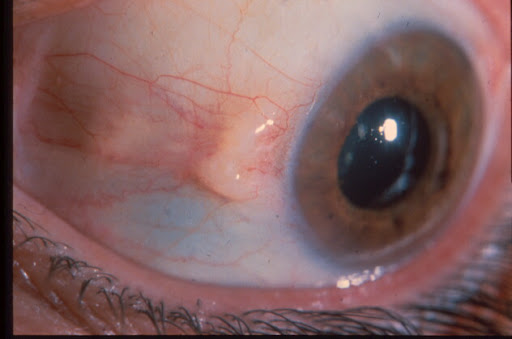This past week I took a basal cell skin cancer off the eyelid of a man younger than I, and I’m in my mid-thirties. Remember when skin cancer was something your grandma and grandpa dealt with? Well those days are past and we are ushering in a generation of young people who will be dealing with skin excisions, biopsies, deforming surgeries and possibly early death due to their love of the sun, tan skin, and refusal to believe they are causing themselves harm. On a recent trip to a sunny locale, I was applying sunscreen before going out on a morning of boating. A friend repeatedly scoffed at my use of sunscreen, insisting I needed more color and couldn’t understand what I was worried about. Everyone in this person’s circle of friends was tan, young and feeling great, but what will the next few years hold for them. Here are a few tanning myths that you need to get by right away to avoid being a shriveled up raisin of skin cancer in your golden years.
Myth #1: “I have to get a base tan so I won’t burn on my vacation. Many believe they need to achieve a “base tan” early in the spring, usually at a tanning booth, so they won’t get sunburned later. Some even think this is protective against sunburns and thus skin damage. Don’t buy into this farce. Any sun or tanning bed exposure that causes a tan is damaging your skin, end of story. UV rays are still blasting away at your DNA and collagen no matter the color of your skin. Spray tans are no help either. Some believe that these will somehow protect you from a burn or damage. Not true.
Myth #2: “I only need sunscreen if I’m going to the beach.” Most people don’t think to put on sunscreen, unless they are expecting to be outside for an extended period of time. A recent New England Journal of Medicine article showed a man who drove a delivery truck for 28 years. He developed dramatic changes to the left side of his face, which was bombarded by UVA rays, while the right side of his face was protected from the shade. Check out the difference between the sides in the picture below.
Myth #3: “I’ve got dark skin so I don’t get sunburned.” Many people born with naturally darker toned skin think they don’t need to protect their skin as they don’t burn as easily. Whether or not you get a sunburn, the UVA and UVB rays are still bombarding you, causing mutations in your DNA and ruining your skin’s elasticity. Olive skinned people don’t look any better in their old age than fair skinned people. Very dark skinned people are also at risk for sun damage. Acral lentiginous melanoma accounts for 50% of melanomas in dark skinned individuals and is often missed as it develops on the palms and soles of the feet. Bob Marley died of this form of melanoma.
Myth #4: “It’s cloudy, so I’ll skip the sunscreen. ” UV rays are still present on cloudy days. If you are going to be outside, apply sunscreen.
Myth #5: “I wear sunscreen, so I’ll never have skin problems.” I wish sunscreen was that good. The mistake most of us make is not reapplying it often enough and not realizing that it doesn’t block all UV radiation. When possible, wearing hats, sunglasses and longer clothing will block out more UV radiation and further reduce your potential skin damage. Sunglasses are especially important to reduce early cataracts and surface damage to the eyes, including unsightly yellow spots on the eyes called pinguecula (see photo).
Myth #6: “Tanning beds are a safer way to tan.” And O.J. Simpson is innocent. The tanning bed industry is constantly working to convince people that tanning beds are safe or even healthful. Some claim their bulbs emit lower UVB and other say tanning is a great way to get your vitamin D. Both of these claims are misleading. All tanning beds cause accelerated skin damage. Multiple studies have shown that people who use tanning beds have a higher rate of melanoma. And regarding vitamin D, you need about 2-10 minutes a day of sun exposure a day to produce plenty. If you drink milk regularly or take vitamin D supplements you don’t need any extra sun exposure.


